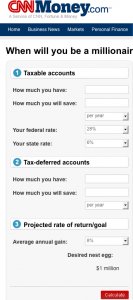Before I wind things up on the subject of partnerships, I just want to summarize my position:
– Having no partners is better than having partners [AJC: I covered my reasoning in this post and in this follow-up post],
but
– Sometimes, having a partner is the only way that you will get a business off the ground [AJC: as I discussed in this post].
Now, my reasoning on this subject is clouded by my own experience with partnerships – in fact, it’s how I got started in business: a family business.
The arguments that my father and I had were legendary, and the business eventually failed.
Yet, it was the business idea that my father passed on to me (which I was able to resurrect, like a phoenix rises from its ashes) that ultimately lead to my success … because that little ‘reinvented’ business eventually funded my next little business (which WAS my idea) which became a multi-national-much-bigger business which I eventually sold => phew! => still leaving me with my original little business 🙂
Now, I have a number of other little businesses in the works – and, I am ‘working’ almost all of these ones with partners; here’s my somewhat revised reasoning:
1. Three of the businesses are my idea, but my partners are the developers (they are all web 2.0 sites): I am taking a Venture Capital view to these, where I direct the strategy of the companies but others do the work; the idea of taking these partners on is to eliminate a major start-up cost – hence risk – and to retain the IP ‘in house’ without having a huge staff cost. I would hate to lose one of the key developers!
2. One of the businesses that I am negotiating to buy into is also a web startup – not currently very ‘web 2.0’ but I intend to take it in that direction – and, the guy that I am hoping to partner with is the developer. If the partnership or site doesn’t work, I am hoping to ‘blow’ only $50k or so. For me, this is really pocket change [AJC: but, who wants to blow $50k every time they want to ‘play’ with a new idea? I sure don’t! So, I AM taking this semi-seriously 😉 ]
3. The other business that I am negotiating to purchase is major: it will cost me $700k up front and another $800k over the next few years to buy out the current owner, who has successfully destroyed his current business: taking it from $2 mill. annual net profit to break/even or a small loss in just 3 or 4 years through divorce, and pure mismanagement. I am hoping that I can reverse this trend … we shall see. Naturally, I don’t want this guy around!
It’s this last one that I mentioned in my post about bonusing the existing key staff to keep them on, rather than taking them on as partners.
But, the key question is: how do you reward and keep good staff?
The common way is to make them equity partners: give them skin in the business … but, I don’t think you really need to do that, if it’s purely a ‘staff retention’ issue …
In my last business, I had a key employee who moved to the USA with me to help me establish my operations over there … I actually transferred 10 of my best Aussie staff for periods of 6 weeks to 6 months, but three stayed on. And, one of them became more and more key to the success of the US operation.
His salary in Australia was $70,000 (Australian dollars, which was about $55,000 US) but I put him on a ‘bonus payment’ while he was in the US of a GUARANTEED $160,000 (US dollars) total PER YEAR while he remained working for me in the USA.
That was a $100k+ pay rise … he was THAT important!
Not to say that he wasn’t operationally replaceable [AJC: I made sure of that 😉 ], but that he just could take care of a lot of stuff for me that others would struggle with … less stress on me at that time was worth $100k.
Then, when I was approached to sell the US operation, I took even more dramatic steps to make sure that he stuck it out:
Even though a $160k pay packet should have been plenty, you can never be sure how people think …. so, I offered him another $100k as a one-off ‘retention bonus’ i.e. if he stayed on until the sale closed and my final payout was delivered.
Was it worth it?
For him, absolutely … and, for me, you betch’a 😉
In fact, my accountant in Australia also got a bonus – $250k (Australian dollars) – just for helping me keep my businesses alive in the early days (remember when the original business went belly-up, leaving me $30k in debt? He was there to help me negotiate with the banks and turn things around) … and, you should NEVER forget those who were there when YOU were the one who needed help!
Adrian.
PS My ‘$160k + $100k Man’ finally did come back to Australia, and he now works for me in my original little business, which can only afford to pay him $55,000 (Australian dollars) per year; he is happy and I am happy … I told you that you can never be sure how people think!





 I’m hoping that after today, you’ll never look at stocks quite the same way again … first we need to go back to when
I’m hoping that after today, you’ll never look at stocks quite the same way again … first we need to go back to when 


 This is rapidly appearing to become a blog about your Number … of course, that’s not the case: it’s a blog about money, specifically about how to make $7 million in 7 years, but you can pretty quickly see that having a real financial goal in mind is a powerful focusing tool.
This is rapidly appearing to become a blog about your Number … of course, that’s not the case: it’s a blog about money, specifically about how to make $7 million in 7 years, but you can pretty quickly see that having a real financial goal in mind is a powerful focusing tool.